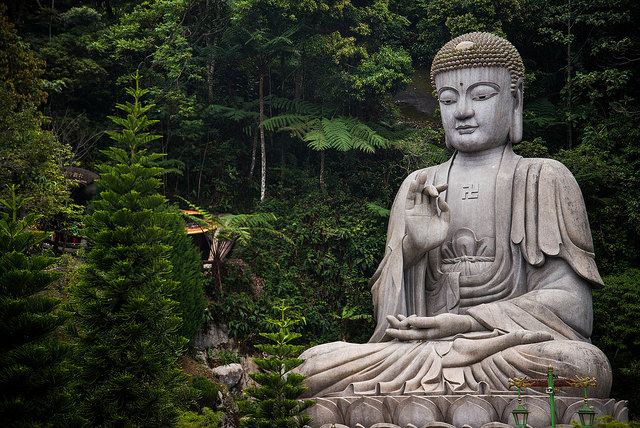Today I tried to become a tree.
I mean, I was standing in tree pose while listening to Ram Dass and he turns people into trees.
Physically, maybe not exactly a tree. But there are ways we can think like a tree by simply not thinking at all.
Ram Dass, or Richard Alpert, is a spiritual teacher from the United States, who makes a harsh, yet reconcilable connection between the nature of nature and the nature within us.
We live in an ego-centric society that is in constant competition. Just look to the way we treat each other. We are graded in school, ranked at work and stereotyped by our peers.
What about the way we criticize ourselves! Our weight, our clothes, our intelligence, our things—everything is under microscopic scrutiny all the time.
But there is an escape! Just look to the trees.
Walking through any fresh and woody area seems to suck out our stressed out CO2 and return it to us as oxygen on happy pills. We prance through the forest, light on our toes, because the weight has been lifted off our shoulders. Our eyes widen like the smile in our hearts and our mouths gasp in awe.
What we do not do, is pass judgment on the trees. We do not snicker at their awkward stances, nor point and laugh at their bare branches. We do not whisper to our friends about the funny color of the bark or the weird growths protruding on their sides. We do not judge the tree because it is a birch or a pine.
We simply accept them as they are. We appreciate them.
So why don’t we do this with each other? Why don’t we do this with ourselves?
According to Ram Dass, as soon as we leave the forest’s edge, our “judging mind” seeps back in. Yes, we all know that little voice that talks to us in our heads; that imaginary “friend” who has an opinion about everything.
That chattering in our heads is a jumbled bag of voices and principles we have consumed since being conceived. It is our mothers, our fathers, our education system, our friends. It is a mixture of our upbringings, our experiences that judges our every move. And thanks to Freud, we now call that chatter the super-ego.
Identifying with the super-ego judge is the culprit at the heart of conflict and it grows stronger the more we identify with it—the more we allow it to tell us what is right and wrong.
But we have had this voice all our lives, how is it possible to put it on mute?
I don’t think Dass provides us with a magic elixir to overnight success, but he does have a valuable message on releasing ourselves from judgment.
His answer lies in the phenomena of nature and how we view the trees.
Standing on the edge of a hill looking out over the canopies of color and the stillness of nature’s phenomena, we are simply observers filled with appreciation. No whispers, no judgement, no too this or too that. The trees are trees and the flowers are flowers no matter their smell, color or form.
As I gaze outward on a single point and take a side bend in tree pose, I grasp the intention in his message.
The serendipitous blend of yoga and Dass could not be more spot on!
Just like Ram Dass, yoga also teaches us to become trees. Letting go of the super-ego means letting go of perfection, and there is no perfection in yoga; there is only practice.
In other words, the goal is to become the trees we observe while standing on the edge of the hill. And just as we allow and accept the trees as they are, the goal is to accept our fumbles and jumbles just as they come.
We—just like the trees—are another one of nature’s phenomena in bloom. Taking a step back to observe ourselves as such provides us with tranquility between the ears and an infinite library of uniqueness to explore.
Practicing to become a tree does not happen overnight, but a good place to start is on the edge of a forest or the tip of your yoga mat. Practice makes practice and hopefully that practice will spread and turn us all into trees.
Namasté.
Relephant Read:
Practical Yogic Advice from a Tree.
Author: Megan Stubbe Teglbjærg
ApprenticeEditor: Lindsay Carricarte / Editor: Catherine Monkman
Image: Flickr/ Carla Cometto







Read 0 comments and reply